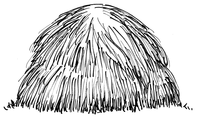Wordless Messages

Dear old and new friends,
Signs speak louder and travel faster than words. The highway sign depicting a black silhouette of a leaping deer warns drivers of potential deer crossing the highway. Traveling at sixty or more miles an hour your mind almost instantly comprehends the warning faster than if it had being printed in words, plus it is also an internationally understood sign.
William Hoy, who played outfielder in the major leagues for fourteen years from 1888 to 1902, was a champion base stealer and in spite of being completely hearing impaired was highly respected by all his teammates. Today, attending or watching baseball games on television you see baseball umpires using hand signals to signal an “out,” “strike” or “safe.” These were first adopted for the special needs of Billy Hoy and continue today as his legacy to baseball.
Clapping hands is so prehistoric it would be impossible to date when the first humans struck their hands together to show approval and delight. Our original ancestors were hunters and gathers who surely must have communicated to others over distances by hand signs of the presence of game or possible dangers.
The massive crowds in the Roman Coliseum decided the fate of defeated gladiators by hand signs: thumbs down he dies, thumbs up he lives. These ancient Roman hand signs continue today to indicate approval or disapproval. In the 1415 battle of Agincourt, though outnumbered, the English were victorious over the French due to the superiority of the English longbow over the French crossbow. The French previously cut off the middle fingers and the forefingers of captured English archers so they couldn’t again draw back the strings of a bow. The defeated French at Agincourt were marched off the battlefield to the taunts of the English archers holding up their hands, palms forward, with their forefinger and middle upright in a “V” to show both fingers intact. This highly symbolic gesture shouted, “We’ll be victorious again against you.” And this bowman’s sign was used famously by the British during World War II. Interesting, but what does all this have to do with me?
This brief history of hand signs has domestic use. Here are a few examples:
1. Communicate over the noise of a television ball game that you found a meal marvelous by clapping your hands.
2. Place your index finger on top of your thumb to make a circle with the other three fingers raised high to say of anything, “It’s great!”
3. Clamp your thumb and index finger down on the end of your nose to signal wordlessly something isn’t good.
4. Blowing a kiss or hand waving is sending affection to another from a distance.
As those early umpires invented hand signs for Billy Hoy to signal a foul ball or home run, consider following their examples and creating your own domestic or inner-partner signs.


 RSS Feed
RSS Feed